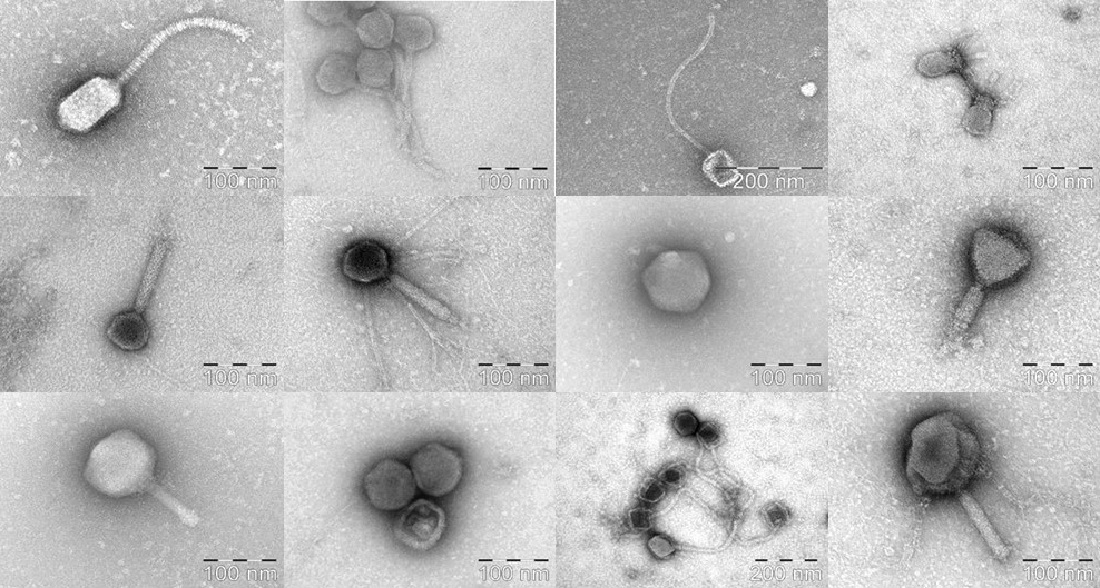Your baby’s gut is crawling with unknown viruses
Babies tumble about with more than 200 previously unknown viral families within their intestines. This large number comes as a surprise to researchers from the University of Copenhagen and COPSAC, who closely studied the diapers of 647 Danish babies and made the first mapping of its kind. These viruses most likely play an important role in protecting children from chronic diseases.

Viruses are usually associated with illness. But our bodies are full of both bacteria and viruses that constantly proliferate and interact with each other in our gastrointestinal tract. While we have known for decades that gut bacteria in young children are vital to protect them from chronic diseases later on in life, our knowledge about the many viruses found there is minimal.
A few years back, this gave University of Copenhagen professor Dennis Sandris Nielsen the idea to delve more deeply into this question. As a result, a team of researchers from COPSAC (Copenhagen Prospective Studies on Asthma in Childhood) and the Department of Food Science at UCPH, among others, spent five years studying and mapping the diaper contents of 647 healthy Danish one-year-olds.
"We found an exceptional number of unknown viruses in the faeces of these babies. Not just thousands of new virus species – but to our surprise, the viruses represented more than 200 families of yet to be described viruses. This means that, from early on in life, healthy children are tumbling about with an extreme diversity of gut viruses, which probably have a major impact on whether they develop various diseases later on in life," says Professor Dennis Sandris Nielsen of the Department of Food Science, senior author of the research paper about the study, now published in Nature Microbiology.
The researchers found and mapped a total of 10,000 viral species in the children's faeces – a number ten times larger than the number of bacterial species in the same children. These viral species are distributed across 248 different viral families, of which only 16 were previously known. The researchers named the remaining 232 unknown viral families after the children whose diapers made the study possible. As a result, new viral families include names like Sylvesterviridae, Rigmorviridae and Tristanviridae.

Bacterial viruses are our allies
"This is the first time that such a systematic an overview of gut viral diversity has been compiled. It provides an entirely new basis for discovering the importance of viruses for our microbiome and immune system development. Our hypothesis is that, because the immune system has not yet learned to separate the wheat from the chaff at the age of one, an extraordinarily high species richness of gut viruses emerges, and is likely needed to protect against chronic diseases like asthma and diabetes later on in life," states Shiraz Shah, first author and a senior researcher at COPSAC.
Ninety percent of the viruses found by the researchers are bacterial viruses – known as bacteriophages. These viruses have bacteria as their hosts and do not attack the children's own cells, meaning that they do not cause disease. The hypothesis is that bacteriophages primarily serve as allies:
"We work from the assumption that bacteriophages are largely responsible for shaping bacterial communities and their function in our intestinal system. Some bacteriophages can provide their host bacterium with properties that make it more competitive by integrating its own genome into the genome of the bacterium. When this occurs, a bacteriophage can then increase a bacterium's ability to absorb e.g. various carbohydrates, thereby allowing the bacterium to metabolise more things," explains Dennis Sandris Nielsen, who continues:
"It also seems like bacteriophages help keep the gut microbiome balanced by keeping individual bacterial populations in check, which ensures that there are not too many of a single bacterial species in the ecosystem. It's a bit like lion and gazelle populations on the savannah."
Shiraz Shah adds:
"Previously, the research community mostly focused on the role of bacteria in relation to health and disease. But viruses are the third leg of the stool and we need to learn more about them. Viruses, bacteria and the immune system most likely interact and affect each other in some type of balance. Any imbalance in this relationship most likely increases the risk of chronic disease."

The remaining ten percent of viruses found in the children are eukaryotic – that is, they use human cells as hosts. These can be both friends and foes for us:
"It is thought-provoking that all children run around with 10-20 of these virus types that infect human cells. So, there is a constant viral infection taking place, which apparently doesn’t make them sick. We just know very little about what’s really at play. My guess is that they’re important for training our immune system to recognise infections later. But it may also be that they are a risk factor for diseases that we have yet to discover," says Dennis Sandris Nielsen.
Could play an important role in inflammatory diseases
The researchers have yet to discover where the many viruses in the one-year-olds come from. Their best answer thus far is the environment:
"Our gut is sterile until we are born. During birth, we are exposed to bacteria from the mother and environment. It is likely that some of the first viruses come along with these initial bacteria, while many others are introduced later via dirty fingers, pets, dirt that kids put in their mouths and other things in the environment," says Dennis Sandris Nielsen.
As Shiraz Shah points out, the entire field of research speaks to a huge global health problem:
"A lot of research suggests that the majority of chronic diseases that we’re familiar with – from arthritis to depression – have an inflammatory component. That is, the immune system is not working as it ought to – which might be because it wasn’t trained properly. So, if we learn more about the role that bacteria and viruses play in a well-trained immune system, it can hopefully lead us to being able to avoid many of the chronic diseases that afflict so many people today."
The research groups have begun investigating the role of gut viruses in relation to a number of different diseases that occur in childhood, such as asthma and ADHD.
ABOUT THE STUDY
- The research team mapped the gut "viromes" from the guts of 647 healthy Danish one-year-old children. "Virome" is an umbrella term for all viruses found in a given environment. This includes both viruses that attack bacteria (bacteriophages), as well as those that go after human cells (eukaryotic virus).
- The 647 infants are all part of the mother-child cohort Copenhagen Prospective Studies on Asthma in Childhood (COPSAC2010), that has been followed very closely clinically throughout childhood at COPSAC. The children are now 13 years old.
- This interactive atlas allows you to see the diversity of viruses in the children and download information about the individual viral families.
- The results have been published in the renowned scientific journal Nature Microbiology.
- The researchers behind the study come from COPSAC, University of Copenhagen; Department of Food Science, University of Copenhagen; Novo Nordisk Foundation Center for Basic Metabolic Research, University of Copenhagen; Department of Health Technology, DTU; Université Laval, Canada; Université Paris-Saclay, France; Université Clermont, France and the University of Copenhagen’s Department of Biology.

Contact
Dennis Sandris Nielsen
Professor
Department of Food Science
University of Copenhagen
dn@food.ku.dk
+45 51 33 03 62
Shiraz Shah
Senior researcher
COPSAC (Copenhagen Prospective Studies on Asthma in Childhood)
Copenhagen University Hospital, Herlev-Gentofte
shiraz.shah@dbac.dk
+45 26 17 16 50
Maria Hornbek
Journalist
Faculty of Science
University of Copenhagen
+45 22 95 42 83
maho@science.ku.dk
